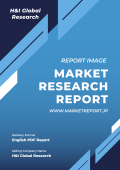目次
第1章. グローバル自動車サイバーセキュリティ市場レポートの範囲と方法論
1.1. 研究目的
1.2. 研究方法論
1.2.1. 予測モデル
1.2.2. デスク調査
1.2.3. トップダウンとボトムアップアプローチ
1.3. 研究属性
1.4. 研究の範囲
1.4.1. 市場定義
1.4.2. 市場セグメンテーション
1.5. 研究の仮定
1.5.1. 包含と除外
1.5.2. 制限事項
1.5.3. 調査対象期間
第2章 執行要約
2.1. CEO/CXOの視点
2.2. 戦略的洞察
2.3. ESG分析
2.4. 主要な発見
第3章 グローバル自動車サイバーセキュリティ市場動向分析
3.1. グローバル自動車サイバーセキュリティ市場を形作る市場動向(2024–2035)
3.2. 推進要因
3.2.1. 接続型・自動運転車両の普及
3.2.2. 規制要件(UNECE WP.29、ISO/SAE 21434)
3.3. 制約
3.3.1. 統合の複雑さと既存システム
3.3.2. 高い導入コスト
3.4. 機会
3.4.1. 電気自動車のセキュリティソリューション
3.4.2. クラウドベースおよびOTA更新セキュリティ
第4章 グローバル自動車サイバーセキュリティ産業分析
4.1. ポーターの5つの力モデル
4.1.1. 購入者の交渉力
4.1.2. 供給者の交渉力
4.1.3. 新規参入の脅威
4.1.4. 代替品の脅威
4.1.5. 競合企業の競争
4.2. ポーターの5つの力予測モデル(2024–2035)
4.3. PESTEL分析
4.3.1. 政治
4.3.2. 経済的
4.3.3. 社会
4.3.4. 技術的
4.3.5. 環境
4.3.6. 法的
4.4. 主要な投資機会
4.5. 主要な成功戦略(2025年)
4.6. 市場シェア分析(2024–2025)
4.7. グローバル価格分析と動向(2025年)
4.8. 分析家の推奨事項と結論
第5章. グローバル自動車サイバーセキュリティ市場規模と予測(形態別)2025–2035
5.1. 市場概要
5.2. 車載セキュリティ
5.2.1. 主要国別内訳推計と予測(2024–2035年)
5.2.2. 地域別市場規模分析(2025~2035年)
5.3. 外部クラウドサービスセキュリティ
5.3.1. 主要国別市場規模推計と予測(2024年~2035年)
5.3.2. 地域別市場規模分析(2025年~2035年)
第6章. グローバル自動車サイバーセキュリティ市場規模と予測(アプリケーション別)、2025–2035
6.1. 市場概要
6.2. ADASおよび安全機能
6.2.1. 主要国別市場規模推計と予測(2024~2035年)
6.2.2. 地域別市場規模分析(2025年~2035年)
6.3. インフォテインメント
6.3.1. 主要国別市場規模推計と予測(2024年~2035年)
6.3.2. 地域別市場規模分析(2025~2035年)
6.4. その他の応用分野(パワートレイン;ボディコントロール;通信システム)
6.4.1. 主要国別市場規模推計と予測(2024年~2035年)
6.4.2. 地域別市場規模分析、2025–2035
第7章. グローバル自動車サイバーセキュリティ市場規模と予測(地域別)、2025–2035
7.1. 自動車サイバーセキュリティ市場、地域別市場概要
7.2. 主要国と新興国
7.3. 北米自動車サイバーセキュリティ市場
7.3.1. 米国自動車サイバーセキュリティ市場
7.3.1.1. 製品形態別市場規模と予測(2025–2035年)
7.3.1.2. 用途別市場規模と予測(2025年~2035年)
7.3.2. カナダ自動車サイバーセキュリティ市場
7.3.2.1. 製品別市場規模と予測(2025年~2035年)
7.3.2.2. アプリケーション別市場規模と予測(2025年~2035年)
7.4. 欧州自動車サイバーセキュリティ市場
7.4.1. イギリス自動車サイバーセキュリティ市場
7.4.1.1. 製品別市場規模と予測(2025年~2035年)
7.4.1.2. アプリケーション別市場規模と予測(2025年~2035年)
7.4.2. ドイツの自動車サイバーセキュリティ市場
7.4.2.1. 製品形態別市場規模と予測(2025年~2035年)
7.4.2.2. アプリケーション別市場規模と予測(2025年~2035年)
7.4.3. フランス、スペイン、イタリアおよび欧州その他(各地域に形態および用途のサブ分類を含む)
7.5. アジア太平洋地域自動車サイバーセキュリティ市場
7.5.1. 中国自動車サイバーセキュリティ市場
7.5.1.1. 形態別市場規模と予測(2025年~2035年)
7.5.1.2. アプリケーション別市場規模と予測(2025年~2035年)
7.5.2. インド、日本、オーストラリア、韓国およびアジア太平洋地域(APAC)の残りの地域(各地域ごとにフォームとアプリケーションのサブ分類を含む)
7.6. ラテンアメリカ自動車サイバーセキュリティ市場
7.6.1. ブラジルおよびメキシコ(各地域に形態および用途のサブ分類を含む)
7.7. 中東・アフリカ自動車サイバーセキュリティ市場
7.7.1. アラブ首長国連邦、サウジアラビア、南アフリカおよび中東・アフリカ地域(MEA)の残りの地域(各地域ごとに形態と用途のサブ分類を含む)
第8章 競合分析
8.1. 主要な市場戦略
8.2. コンチネンタルAG
8.2.1. 会社概要
8.2.2. 主要幹部
8.2.3. 会社の概要
8.2.4. 財務実績(データ入手状況により異なります)
8.2.5. 製品/サービスポートフォリオ
8.2.6. 最近の動向
8.2.7. 市場戦略
8.2.8. SWOT分析
8.3. Aptiv PLC
8.4. ハーマン・インターナショナル(サムスン電子
8.5. NXP セミコンダクターズ N.V.
8.6. インフィニオン・テクノロジーズ AG
8.7. インテル
8.8. ロバート・ボッシュ GmbH
8.9. シスコシステムズ
8.10. ハネウェル・インターナショナル社
8.11. ギャレット・モーション社
表一覧
表1. グローバル自動車サイバーセキュリティ市場、レポートの範囲
表2. グローバル自動車サイバーセキュリティ市場規模推計および予測(形態別)、2024–2035
表3. グローバル自動車サイバーセキュリティ市場規模推計と予測(提供形態別)、2024–2035
表4. グローバル自動車サイバーセキュリティ市場規模推計と予測(セキュリティタイプ別)、2024–2035
表5. グローバル自動車サイバーセキュリティ市場規模推計と予測(車両タイプ別)、2024–2035
表6. グローバル自動車サイバーセキュリティ市場規模予測(用途別)、2024–2035
表7. グローバル自動車サイバーセキュリティ市場規模予測(推進方式別)、2024–2035
表8. グローバル自動車サイバーセキュリティ市場規模推計と予測(自律レベル別)、2024–2035
表9. 米国自動車サイバーセキュリティ市場、推計と予測、2024–2035
表10. カナダ自動車サイバーセキュリティ市場、推計と予測、2024–2035
…
表20. 韓国の自動車サイバーセキュリティ市場、推計と予測、2024–2035
図表一覧
図1. グローバル自動車サイバーセキュリティ市場、調査方法論
図2. グローバル自動車サイバーセキュリティ市場、市場推計手法
図3. グローバル自動車サイバーセキュリティ市場、市場規模推計方法と予測手法
図4. グローバル自動車サイバーセキュリティ市場、2025年の主要動向
図5. グローバル自動車サイバーセキュリティ市場、成長見通し 2024–2035
図6. グローバル自動車サイバーセキュリティ市場、ポーターの5つの力モデル
図7. グローバル自動車サイバーセキュリティ市場、PESTEL分析
図8. グローバル自動車サイバーセキュリティ市場、バリューチェーン分析
図9. 自動車サイバーセキュリティ市場(形態別)、2025年と2035年
図10. 自動車サイバーセキュリティ市場(提供形態別)、2025年と2035年
図11. 自動車サイバーセキュリティ市場(セキュリティタイプ別)、2025年と2035年
図12. 自動車サイバーセキュリティ市場(車両タイプ別)、2025年と2035年
図13. 自動車サイバーセキュリティ市場(用途別)、2025年および2035年
図14. 北米自動車サイバーセキュリティ市場、2025年と2035年
図15. 欧州自動車サイバーセキュリティ市場、2025年と2035年
図16. アジア太平洋地域自動車サイバーセキュリティ市場、2025年と2035年
図17. ラテンアメリカ自動車サイバーセキュリティ市場、2025年と2035年
図18. 中東・アフリカ自動車サイバーセキュリティ市場、2025年と2035年
図19. グローバル自動車サイバーセキュリティ市場、企業別市場シェア分析 2025
Chapter 1. Global Automotive Cybersecurity Market Report Scope & Methodology
1.1. Research Objective
1.2. Research Methodology
1.2.1. Forecast Model
1.2.2. Desk Research
1.2.3. Top-Down and Bottom-Up Approach
1.3. Research Attributes
1.4. Scope of the Study
1.4.1. Market Definition
1.4.2. Market Segmentation
1.5. Research Assumption
1.5.1. Inclusion & Exclusion
1.5.2. Limitations
1.5.3. Years Considered for the Study
Chapter 2. Executive Summary
2.1. CEO/CXO Standpoint
2.2. Strategic Insights
2.3. ESG Analysis
2.4. Key Findings
Chapter 3. Global Automotive Cybersecurity Market Forces Analysis
3.1. Market Forces Shaping the Global Automotive Cybersecurity Market (2024–2035)
3.2. Drivers
3.2.1. Proliferation of Connected & Autonomous Vehicles
3.2.2. Regulatory Mandates (UNECE WP.29, ISO/SAE 21434)
3.3. Restraints
3.3.1. Integration Complexity & Legacy Systems
3.3.2. High Implementation Costs
3.4. Opportunities
3.4.1. Electric Vehicle Security Solutions
3.4.2. Cloud-Based & OTA Update Security
Chapter 4. Global Automotive Cybersecurity Industry Analysis
4.1. Porter’s Five Forces Model
4.1.1. Bargaining Power of Buyer
4.1.2. Bargaining Power of Supplier
4.1.3. Threat of New Entrants
4.1.4. Threat of Substitutes
4.1.5. Competitive Rivalry
4.2. Porter’s Five Forces Forecast Model (2024–2035)
4.3. PESTEL Analysis
4.3.1. Political
4.3.2. Economic
4.3.3. Social
4.3.4. Technological
4.3.5. Environmental
4.3.6. Legal
4.4. Top Investment Opportunities
4.5. Top Winning Strategies (2025)
4.6. Market Share Analysis (2024–2025)
4.7. Global Pricing Analysis and Trends 2025
4.8. Analyst Recommendation & Conclusion
Chapter 5. Global Automotive Cybersecurity Market Size & Forecasts by Form 2025–2035
5.1. Market Overview
5.2. In-Vehicle Security
5.2.1. Top Countries Breakdown Estimates & Forecasts, 2024–2035
5.2.2. Market Size Analysis by Region, 2025–2035
5.3. External Cloud Services Security
5.3.1. Top Countries Breakdown Estimates & Forecasts, 2024–2035
5.3.2. Market Size Analysis by Region, 2025–2035
Chapter 6. Global Automotive Cybersecurity Market Size & Forecasts by Application 2025–2035
6.1. Market Overview
6.2. ADAS & Safety
6.2.1. Top Countries Breakdown Estimates & Forecasts, 2024–2035
6.2.2. Market Size Analysis by Region, 2025–2035
6.3. Infotainment
6.3.1. Top Countries Breakdown Estimates & Forecasts, 2024–2035
6.3.2. Market Size Analysis by Region, 2025–2035
6.4. Other Applications (Powertrain; Body Control; Communication Systems)
6.4.1. Top Countries Breakdown Estimates & Forecasts, 2024–2035
6.4.2. Market Size Analysis by Region, 2025–2035
Chapter 7. Global Automotive Cybersecurity Market Size & Forecasts by Region 2025–2035
7.1. Automotive Cybersecurity Market, Regional Market Snapshot
7.2. Top Leading & Emerging Countries
7.3. North America Automotive Cybersecurity Market
7.3.1. U.S. Automotive Cybersecurity Market
7.3.1.1. Form breakdown size & forecasts, 2025–2035
7.3.1.2. Application breakdown size & forecasts, 2025–2035
7.3.2. Canada Automotive Cybersecurity Market
7.3.2.1. Form breakdown size & forecasts, 2025–2035
7.3.2.2. Application breakdown size & forecasts, 2025–2035
7.4. Europe Automotive Cybersecurity Market
7.4.1. UK Automotive Cybersecurity Market
7.4.1.1. Form breakdown size & forecasts, 2025–2035
7.4.1.2. Application breakdown size & forecasts, 2025–2035
7.4.2. Germany Automotive Cybersecurity Market
7.4.2.1. Form breakdown size & forecasts, 2025–2035
7.4.2.2. Application breakdown size & forecasts, 2025–2035
7.4.3. France, Spain, Italy & Rest of Europe (each with Form & Application sub-breakdowns)
7.5. Asia Pacific Automotive Cybersecurity Market
7.5.1. China Automotive Cybersecurity Market
7.5.1.1. Form breakdown size & forecasts, 2025–2035
7.5.1.2. Application breakdown size & forecasts, 2025–2035
7.5.2. India, Japan, Australia, South Korea & Rest of APAC (each with Form & Application sub-breakdowns)
7.6. Latin America Automotive Cybersecurity Market
7.6.1. Brazil & Mexico (each with Form & Application sub-breakdowns)
7.7. Middle East & Africa Automotive Cybersecurity Market
7.7.1. UAE, Saudi Arabia, South Africa & Rest of MEA (each with Form & Application sub-breakdowns)
Chapter 8. Competitive Intelligence
8.1. Top Market Strategies
8.2. Continental AG
8.2.1. Company Overview
8.2.2. Key Executives
8.2.3. Company Snapshot
8.2.4. Financial Performance (Subject to Data Availability)
8.2.5. Product/Services Portfolio
8.2.6. Recent Development
8.2.7. Market Strategies
8.2.8. SWOT Analysis
8.3. Aptiv PLC
8.4. Harman International (Samsung Electronics)
8.5. NXP Semiconductors N.V.
8.6. Infineon Technologies AG
8.7. Intel Corporation
8.8. Robert Bosch GmbH
8.9. Cisco Systems, Inc.
8.10. Honeywell International Inc.
8.11. Garrett Motion Inc.











